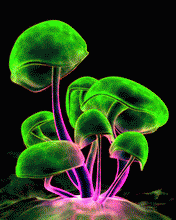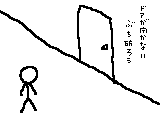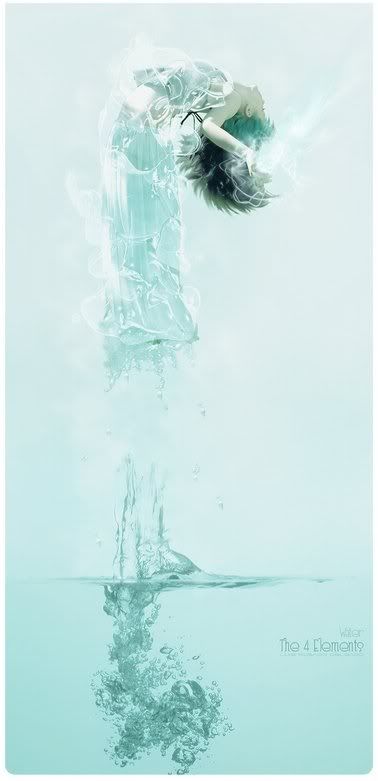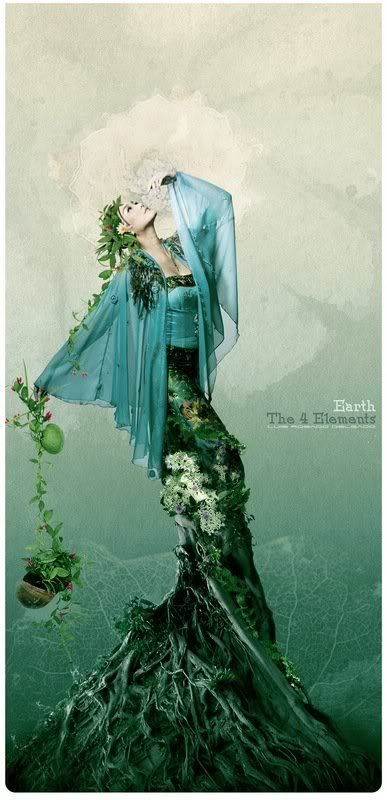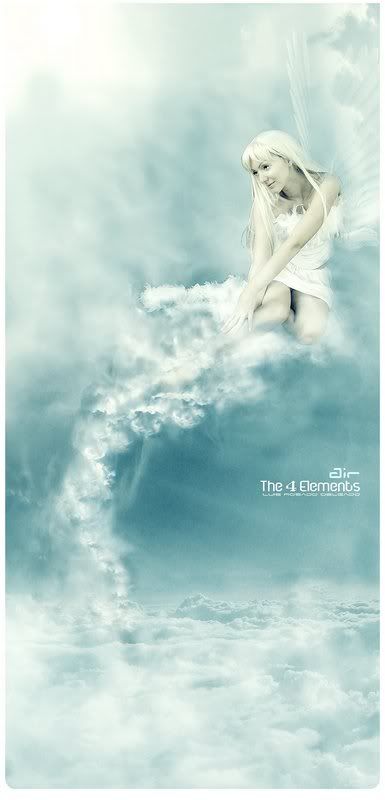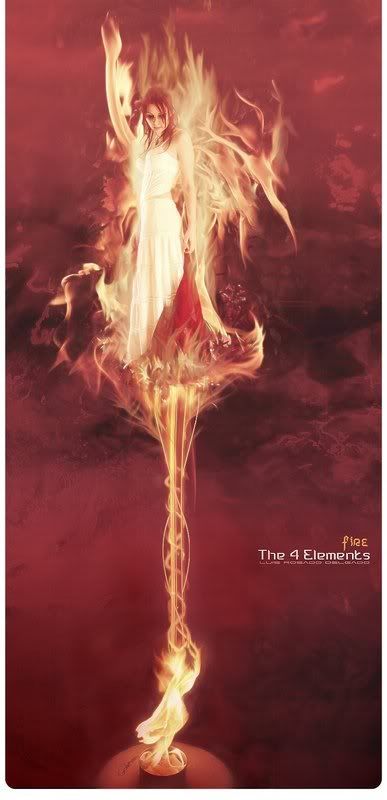Showing posts with label Element Series(Water - Ice). Show all posts
Showing posts with label Element Series(Water - Ice). Show all posts
Wednesday, April 18, 2012
Monday, September 19, 2011
Japanese Tsunami Viewed From A Car
Yu Muroga is a Japanese driver. It was his tour took place when the earthquake March 11, 2011. Like most people of his area, he did not feel threatened by the tsumani, as it was far enough from the coast. So he continued to drive and do its job. The HD camera mounted on the dashboard has not only captured the shock but also the moments that followed, where many drivers were stranded by the waters of the tsunami.
Note : The "Dancing" man at the road junction is due to EARTHQUAKE (ground shaking)
Note : The "Dancing" man at the road junction is due to EARTHQUAKE (ground shaking)
Wednesday, August 10, 2011
Blood-red lake mystery is getting a lot of attention
"A West Texas lake that is almost completely dried up has left a small mystery, a pool of water that's so red it looks like blood" ~ kxan on Aug 3, 2011
Thursday, March 10, 2011
Bioluminescent algae at Camp Cooinda on the Gippsland Lakes in eastern Victoria
A man stands still as others splash algae-laden water behind him.
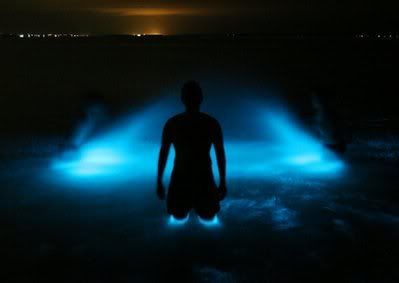
Lake Lights Up at Night
What happens to lakes in an area hit by forest fires and floods? Some will glow in the dark.
For a cluster of lakes in Australia's eastern Victoria, the combination of the fire and then the rain washed ash and nitrogen-rich soil into the water. The Gippsland Lakes experienced a rise in sea level. That caused the lakes to mix with sea water, which also raised the salinity.
This recipe led to the introduction of a species of algae called Noctiluca scintillans, commonly known as "sea sparkle." The bioluminescent brew gave the water a nocturnal glow.
Bioluminescent algae in eastern Victoria
Bioluminescent algae, Noctiluca Scintillan, in waves lapping at a beach on the Gippsland Lakes. This was a 1.5 hour exposure
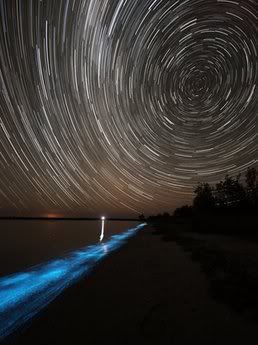
Bioluminescent splash
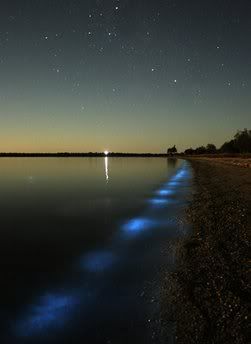
Algae lights up shore
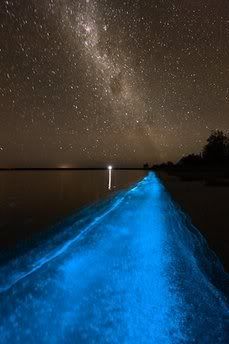
Bioluminescent algae in eastern Victoria
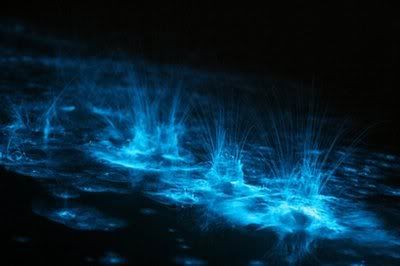
Bioluminescence -- when a living organism lights up at night -- is a natural phenomenon. Australian photographer Phil Hart caught the eerie light of the lakes and shared his snaps.
The shutterbug runs Night Sky Photography workshops in Australia, where he teaches the art of capturing images like these.
Photo courtesy Phil Hart/www.philhart.com

Lake Lights Up at Night
What happens to lakes in an area hit by forest fires and floods? Some will glow in the dark.
For a cluster of lakes in Australia's eastern Victoria, the combination of the fire and then the rain washed ash and nitrogen-rich soil into the water. The Gippsland Lakes experienced a rise in sea level. That caused the lakes to mix with sea water, which also raised the salinity.
This recipe led to the introduction of a species of algae called Noctiluca scintillans, commonly known as "sea sparkle." The bioluminescent brew gave the water a nocturnal glow.
Bioluminescent algae in eastern Victoria
Bioluminescent algae, Noctiluca Scintillan, in waves lapping at a beach on the Gippsland Lakes. This was a 1.5 hour exposure

Bioluminescent splash

Algae lights up shore

Bioluminescent algae in eastern Victoria

Bioluminescence -- when a living organism lights up at night -- is a natural phenomenon. Australian photographer Phil Hart caught the eerie light of the lakes and shared his snaps.
The shutterbug runs Night Sky Photography workshops in Australia, where he teaches the art of capturing images like these.
Photo courtesy Phil Hart/www.philhart.com
Thursday, September 11, 2008
Ancient Million-year-old Blue Iceberg Melts Into Nothingness
An incredibly rare event caught on video!
Subscribe to:
Posts (Atom)



